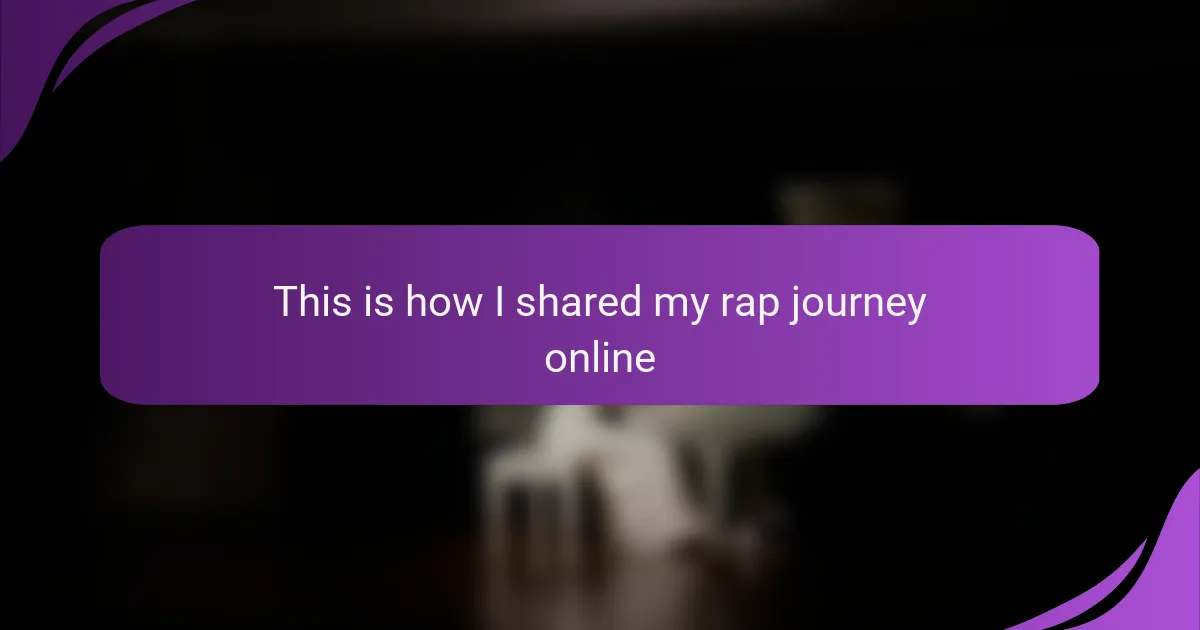Key takeaways
- Chicago rap features authentic storytelling and diverse styles, reflecting the city’s culture and social issues.
- Prominent artists like Common, Kanye West, Chance the Rapper, Lil Durk, and Polo G have significantly shaped the genre with their unique perspectives.
- Sharing your rap journey online fosters community, engagement, and collaboration with fans and fellow artists.
- Authenticity and consistency are key for effective content creation, enhancing connection with the audience and honing the craft.
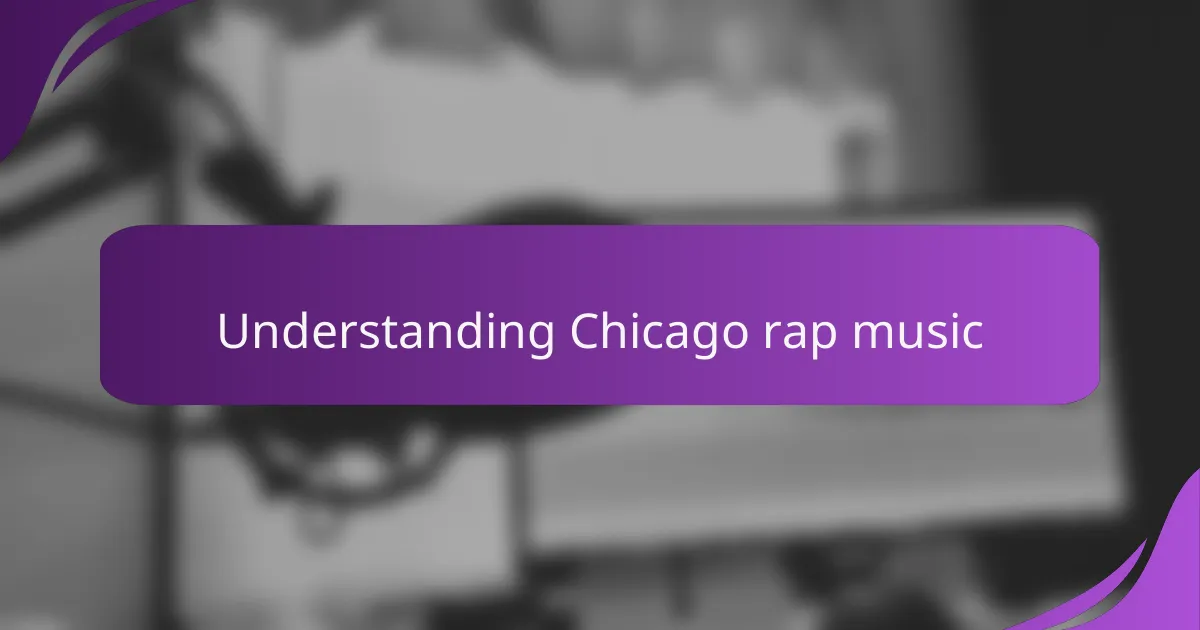
Understanding Chicago Rap Music
Chicago rap music is known for its raw authenticity and deep-rooted connection to the city’s culture. I can recall the first time I heard a track from Chance the Rapper; it felt like he was narrating the very streets of Chicago, sharing stories that resonated with my own experiences. This genre reflects the struggles and triumphs of its artists, making the music feel personal and immediate.
The evolution of Chicago rap is fascinating, as it showcases a blend of various influences. From the drill scene that emerged with artists like Chief Keef, characterized by its aggressive beats and lyrics, to the more introspective and soulful tracks of artists like Common, the diversity in styles highlights the city’s vibrant creativity. It’s a testament to how the environment shapes the sound, making Chicago a unique hub for hip-hop.
- Deep storytelling rooted in personal experiences.
- Diverse styles ranging from drill to conscious rap.
- Strong community ties and cultural influences.
- Artists often address social issues and local conditions.
- A blend of innovation with respect for hip-hop history.
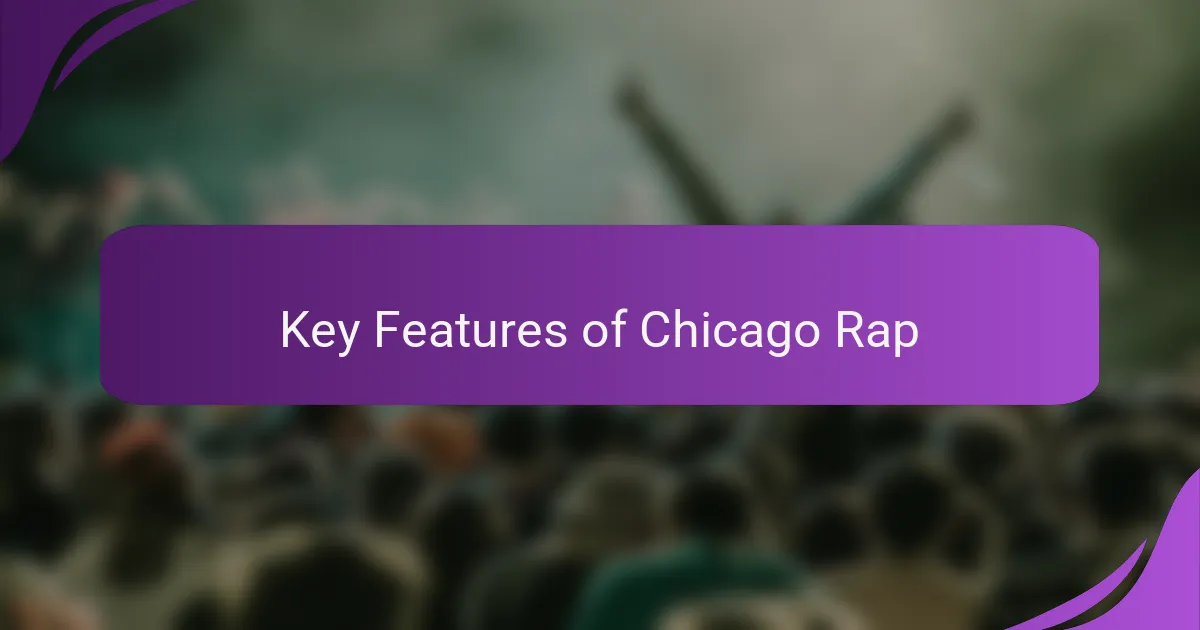
Key Features of Chicago Rap
Chicago rap is distinct for its raw authenticity and storytelling. I remember the first time I heard a track that encapsulated the heart and soul of the city. It painted vivid pictures of everyday life, struggles, and triumphs, making me feel an emotional connection to the artist. This ability to convey such powerful narratives is a hallmark of the genre.
Key features that define Chicago rap include:
- Authentic Storytelling: Artists share personal experiences that reflect their realities.
- Diverse Beats: From drill to soul sampling, the variety keeps the sound dynamic.
- Social Commentary: Many rappers highlight societal issues, sparking important conversations.
- Collaborative Spirit: There is a strong sense of community, with frequent collaborations among artists.
- Innovative Flow: Chicago rappers often display unique rhythms and cadences that set them apart.
In my own experience, discovering the different styles within Chicago rap broadened my appreciation for the genre and inspired my own creativity.
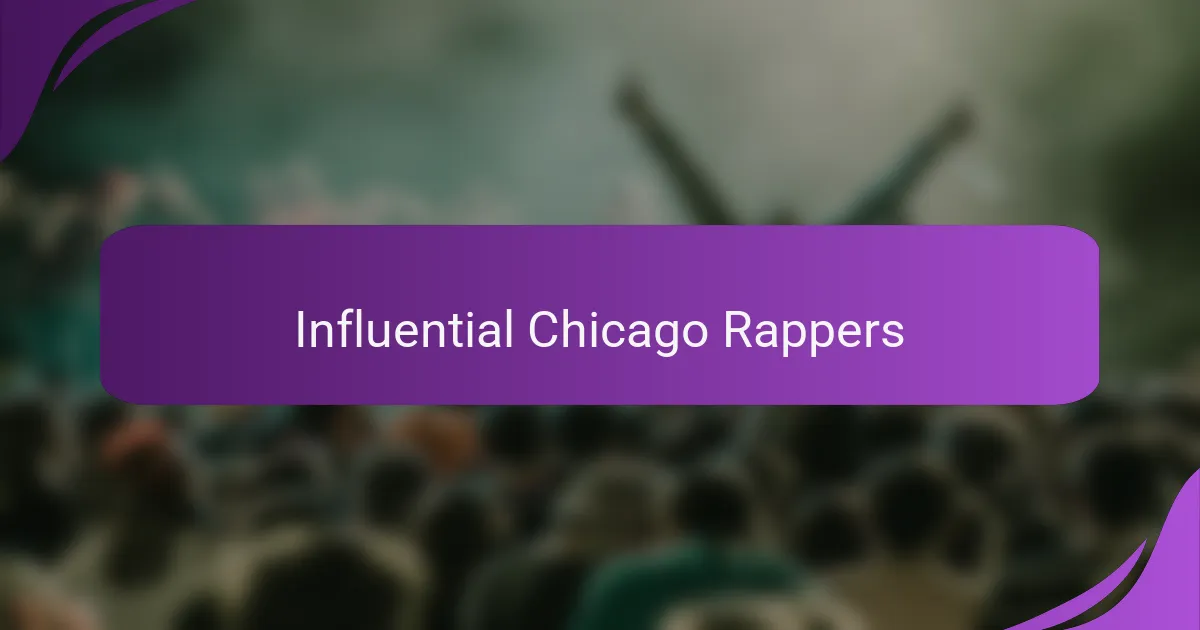
Influential Chicago Rappers
In the landscape of Chicago rap, several figures stand out for their incredible impact. Artists like Common and Kanye West have not only defined the sound of Chi-town but also shared their personal experiences through their lyrics, which can be profoundly relatable. I still remember the first time I heard Common’s “I Used to Love H.E.R.” — it was like he was speaking directly to my own struggles with identity and love for hip-hop.
Another influential name is Chance the Rapper, who has touched countless hearts with his unique blend of optimism and grit. Listening to “Coloring Book” for the first time, I felt an overwhelming sense of hope. It’s inspiring to see how he uses his platform for positivity while staying true to his roots. Each of these rappers has shaped not just the sound of Chicago, but the very essence of my own musical journey.
- Common: A pioneer who combines poetic storytelling with social awareness.
- Kanye West: His innovative approach reshaped hip-hop production and culture.
- Chance the Rapper: Known for his uplifting messages and community focus, blending gospel elements into rap.
- Lil Durk: Represents the raw voice of the streets with his heartfelt narratives.
- Polo G: A younger artist whose introspective lyrics resonate deeply with the struggles of youth.

Sharing Your Rap Journey
Sharing your rap journey online can be an exciting and transformative experience. I remember when I first started posting my tracks; it felt like opening a window to the world. I received feedback that truly helped me grow, revealing both the supportive and critical sides of the audience.
One of the most effective ways I found to share my journey was through social media platforms. I could connect with local producers and fellow rappers in Chicago, which gave me a sense of community. The interactions I had not only encouraged me to keep creating but also inspired collaborations that shaped my sound.
For those looking to share their rap journey, it’s essential to stay authentic and to share not just the highs, but the lows too. People relate to vulnerability, and sharing my struggles made my art resonate more deeply with listeners.
| Platform | Key Features |
|---|---|
| Visual storytelling, direct engagement with fans | |
| YouTube | Video content for performances and behind-the-scenes |
| SoundCloud | Music sharing, community feedback |

Building an Online Presence
Building an online presence was crucial for my rap journey. I remember the first time I uploaded a track to SoundCloud; the nerves were real, but the feedback was incredible. I discovered early on that engaging with my listeners made a huge difference. Responding to comments and sharing my story helped create a community around my music.
I also learned the importance of using social media to connect with fans and other artists. I vividly recall sharing snippets of my lyrics on Instagram and getting messages from people who felt my words. These interactions fueled my passion and motivated me to keep going.
Here’s a comparison of popular platforms to help you decide which one might be the best for sharing your music:
| Platform | Strengths |
|---|---|
| SoundCloud | Great for musicians, community feedback, easy to share tracks |
| Visual engagement, direct fan interaction, story sharing | |
| YouTube | Video content, wider reach, monetization opportunities |

Engaging with Your Audience
Engaging with your audience is crucial in the world of Chicago rap. I remember when I first shared my tracks online; the feedback from listeners gave me real motivation. It felt amazing to connect with people who resonated with my lyrics and experiences.
Being active on social media played a huge role in this. I often invited fans to share their thoughts or stories related to the themes in my music. This two-way conversation not only strengthened my fanbase but also made my art feel even more meaningful.
Here’s a simple comparison of different ways to engage with your audience that I found effective:
| Engagement Method | Description |
|---|---|
| Social Media Polls | Gather opinions on potential song topics or lyrics. |
| Live Q&A Sessions | Direct interaction where fans can ask questions and share their thoughts. |
| Behind-the-Scenes Content | Share glimpses of the creative process to make fans feel involved. |
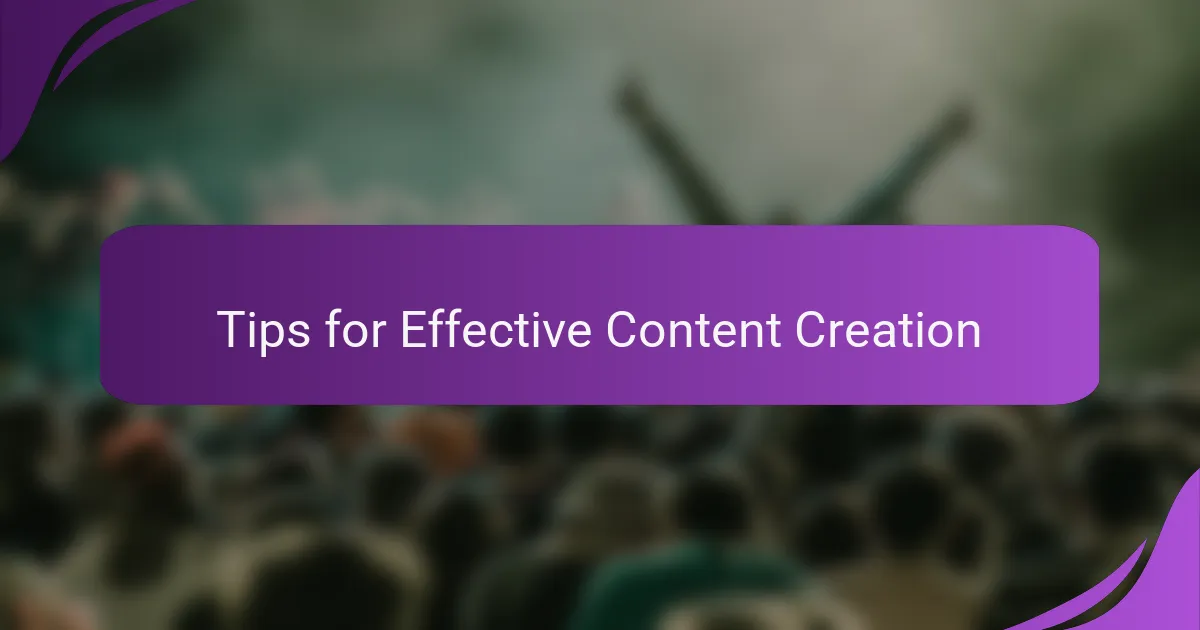
Tips for Effective Content Creation
When I began sharing my rap journey online, one of the key lessons I learned was the importance of authenticity. Being true to myself allowed my audience to connect with my story on a deeper level. I remember the first time I shared a verse that reflected my struggles and aspirations; the feedback was overwhelmingly positive, and it reminded me that vulnerability can resonate with others.
Another crucial aspect is consistency in content creation. I realized that regularly posting not only kept my audience engaged but also helped me hone my craft. I often schedule specific days for releasing new rap videos or behind-the-scenes glimpses into my writing process. This keeps followers looking forward to my work and gives me structure in my creative journey.
Here are some tips to enhance your content creation:
- Embrace your unique story and share personal experiences.
- Create a consistent posting schedule to build anticipation.
- Use visuals, like music videos and clips, to enhance your message.
- Engage with your audience through comments and social media.
- Experiment with different formats, such as live streams or Q&As.
- Analyze your audience’s feedback to refine your content strategy.
